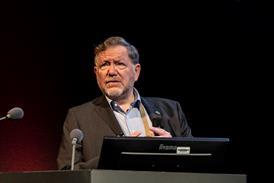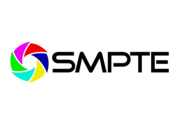All Technical Papers articles – Page 13
-
 Technical Papers
Technical PapersHDR for legacy displays using sectional tone mapping
One of the main goals of future television is to create a more immersive experience. The viewer should get the feeling that he or she is inside the action.
-
 Technical Papers
Technical PapersImage adaptation requirements for High Dynamic Range video under reference and non-reference viewing conditions
High Dynamic Range video (HDR) is a relatively new technique which allows the content producer to more accurately reproduce an image without the suppression of highlights usually associated with conventional video.
-
 Technical Papers
Technical PapersA single layer HDR video coding framework with SDR capability
The arrival of the High Efficiency Video Coding (HEVC) standard enables the deployment of new video services with enhanced viewing experience, such as Ultra HD broadcast services. In addition to an increased spatial resolution, Ultra HD can bring a wider colour gamut (WCG) and a higher dynamic range (HDR) than ...
-
 Technical Papers
Technical PapersJust-in-time prepared captioning for live transmissions
Over the last 30 years the volumes of ‘SDH’ captioning (Subtitles for the Deaf and Hard of Hearing), both live and pre-recorded, have increased considerably across the globe.
-
 Technical Papers
Technical PapersDASH in ATSC 3.0: Bridging the gap between OTT and broadcast
ATSC 3.0 revolutionizes TV broadcast distribution. For the first time, a hybrid system is designed from day 1 in order to support broadcast and broadband distribution in an integrated manner and to target different receiver platforms.
-
 Technical Papers
Technical PapersImproving live performance in HTTP adaptive streaming systems
While HTTP adaptive streaming (HAS) technology has been very successful in delivering stable over-the-top video experiences at large scale, the technology has a number of important limitations as well.
-
 Technical Papers
Technical PapersHigh Dynamic Range subjective testing
UHD televisions are now retailing in significant numbers, and UHD services are starting to appear in the market.
-
 Technical Papers
Technical PapersReal time cross-mapping of High Dynamic Range images
Broadcast production today utilises a single colour volume workflow, as majority of footage is captured in one format: SDR (gamma non-linear curve and ITU-R BT.709 (1) colour primaries).
-
 Technical Papers
Technical PapersVideo translation: Weaving synthetic voices into the multilingual production workflow
The plethora of digital platforms makes information available in a great number of languages, and the expectation of audiences to be able to consume media in their own languages is growing.
-
 Technical Papers
Technical PapersAdvantages and challenges of a vast server-side video advertising solution
Video advertising is still one of the leading approaches with which content and service providers can monetize video content.
-
 Technical Papers
Technical PapersBest practices for OTT dynamic ad insertion
With the streaming format wars in the rear view mirror, HAS, specifically Apple’s HTTP Live Streaming (HLS) and the Dynamic Adaptive Streaming over HTTP (MPEG DASH) specifications now allow for the efficient, scalable delivery of media content globally from conventional HTTP servers.
-
 Technical Papers
Technical PapersIncreasing ad personalization with server-side ad insertion
There is no question that consumers have come to expect content anywhere, any time and on any device, whether fixed or mobile, on demand.
-
 Technical Papers
Technical PapersImplementing dynamic ad insertion in HTML5 using MPEG DASH
Content owners and broadcasters are increasingly using adaptive streaming (ABR) over HTTP to reach a multitude of devices at any time and place.
-
 Technical Papers
Technical PapersWIB – A new system concept for Digital Terrestrial Television (DTT)
WiB is a new wideband reuse-1 based DTT concept, developed at Teracom, Sweden, by E. Stare.
-
 Technical Papers
Technical Papers3GPP based TV service layer
The Third Generation Partnership (3GPP) project since its creation in December 1998 has a long history in enabling mobile communication and had included enablers for media streaming and distribution in its very early roadmap.
-
 Technical Papers
Technical PapersLocal content delivery in SFNS using layered division multiplexing (LDM)
Terrestrial broadcast services delivery is based on Single Frequency Networks (SFNs) in most European countries, and most likely, it will be the future of the North American broadcasting networks.
-
 Technical Papers
Technical PapersMobile and broadcast networks cooperation for high quality mobile video: A win-win approach
The mobile communications sector is characterized by an exponentially increasing traffic demand for high quality mobile multimedia services, a significant portion of which identifiable with linear Television (TV) and scheduled broadcast (point-to-multipoint) distribution.
-
 Technical Papers
Technical PapersThe open source turning codec: Towards fast, flexible and parallel HEVC encoding
The ITU-T Video Coding Experts Group (VCEG) and the ISO/IEC Moving Picture Experts Group (MPEG) combined their expertise to form the Joint Collaborative Team on Video Coding (JCT-VC), and finalised the first version of the H.265/High Efficiency Video Coding (HEVC) standard (1) in January 2013.
-
 Technical Papers
Technical PapersConversion and HEVC compression of High Dynamic Range (HDR) video
Digital video compression has transformed the way in which television has been consumed and delivered to consumers for more than 25 years.
-
 Technical Papers
Technical PapersFuture of voice control for consumer interactions with IoT systems: in the context of integration with other services offered by traditional service providers
As the population in developed countries ages and installations of flat screens continue en-mass, consumers’ affection for large TV screens grows.








































